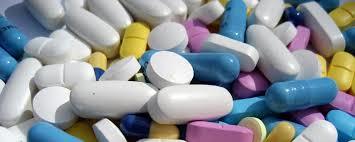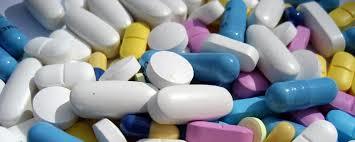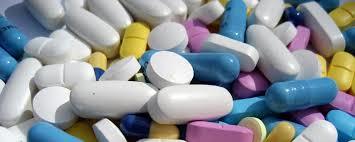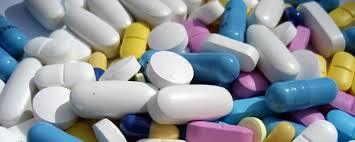
SAMe, Methylcobalamin & L-5 Methyltetrahydrofolate Calcium Tablet
Product Details:
- Purity 98%
- Formulations Type General Drugs
- Formulations Form Tablets
- Gender/Age Group Adult
- Storage Instructions Store in Cool
- Click to view more
SAMe, Methylcobalamin & L-5 Methyltetrahydrofolate Calcium Tablet Price And Quantity
- 300 Box
- 64 INR/Box
SAMe, Methylcobalamin & L-5 Methyltetrahydrofolate Calcium Tablet Product Specifications
- Store in Cool
- Tablets
- Adult
- General Drugs
- 98%
SAMe, Methylcobalamin & L-5 Methyltetrahydrofolate Calcium Tablet Trade Information
- Cash in Advance (CID) Cash Advance (CA)
- 300 Box Per Month
- 1 Months
- Yes
- Sample costs shipping and taxes has to be paid by the buyer
- Western Europe Asia Australia North America Eastern Europe Central America South America Africa
- All India
Product Description
SAMe is a chemical compound which is produced and consumed in liver. It is essential for three metabolic processes:
â— Transmethylation
â— Transsulfuration
â— Polyamine synthesis
Transmethylation: SAMe donates a methyl group to a wide variety of substrates including DNA, proteins, neurotransmitters and phospholipids.
Transsulfuration: SAMe is converted to cysteine; precursor of glutathione, major cellular antioxidant and liver detoxification agent. It is an essential compound which plays a major role in protecting hepatocytes (liver cells) from waste products that the liver removes from the blood stream. Maintaining adequate levels of SAMe is therefore critical for healthy liver function. It also stimulates synthesis of the proteoglycans used for cartilage regeneration.
Polyamine Synthesis/Aminopropylation:SAMe is involved in synthesis of the polyamines through the aminopropylation pathway. These have anti-inflammatory and analgesic effect. Polyamines are involved in regulation of cell growth.
Indications & Usage:
â— Alcoholic liver disease
â— Non-alcoholic fatty liver disease
â— Intrahepatic Cholestasis
â— Cholestasis in pregnancy
â— Hepatitis
â— Drug/Toxin induced injury
About Composition:
The liver is a marvelously sophisticated chemical laboratory, capable of carrying out thousands of chemical transformations on which the body depends. The liver produces important chemicals from scratch, modifies others to allow the body to use them better, and neutralizes an enormous range of toxins. Without a functioning liver, you can't live for very long.
Unfortunately, a number of influences can severely damage the liver. Alcoholism is the most common. Alcohol is a powerful liver toxin that harms the liver in three stages: alcoholic fatty liver, alcoholic hepatitis , and alcoholic cirrhosis. Although the first two stages of injury are usually reversible, alcoholic cirrhosis is not. Generally, more than 10 years of heavy alcohol abuse is required to cause liver cirrhosis. Other causes include hepatitis C infection, primary biliary cirrhosis, and liver damage caused by occupational chemicals and drugs.
A cirrhotic liver is firm and nodular to the touch, and, in advanced cases, is shrunken in size. These changes reflect severe damage to its structure. A high percentage of liver cells have died, and fibrous scar-like tissue permeates the organ.
A cirrhotic liver cannot perform its chemical tasks, leading to wide-ranging impairment of bodily functions, such as the development of jaundice (yellowing of the skin due to unprocessed toxins), mental confusion, emaciation, and skin changes. In addition, the fibrous tissue impedes blood that is supposed to pass through the liver. This leads to abdominal swelling as fluid backs up (ascites), and to bleeding in the esophagus as veins expand to provide an alternative fluid path. Ultimately, coma develops, often triggered by internal bleeding or infection.
Treatments for liver cirrhosis begin with stopping the use of alcohol and all other liver-toxic substances. A number of treatments such as potassium-sparing diuretics can ameliorate symptoms to some extent, but they do not cure the disease.
The liver is too complex for a man-made machine to duplicate its functions, so there is no equivalent of kidney dialysis for liver cirrhosis. Only a liver transplant can help. Unfortunately, this is a very difficult operation, with a high failure rate. In addition, the supply of usable livers is inadequate to meet the need.
Individuals with liver cirrhosis have difficulty synthesizing the substance S-adenosylmethionine (SAMe) from the amino acid methionine. For this reason, supplemental SAMe has been tried as a treatment for cirrhosis.
What does SAMe has to do with Liver:
I) It Influences :
â—Tissue oxidative stress
â—Mitochondrial function
â—Hepatocellular apoptosis
â—Malignant transformation
II)Principle methyl donor (for methylation of nucleic acids, phospholipids, histones, biogenic amines and proteins)
III)Precursor for synthesis of glutathione
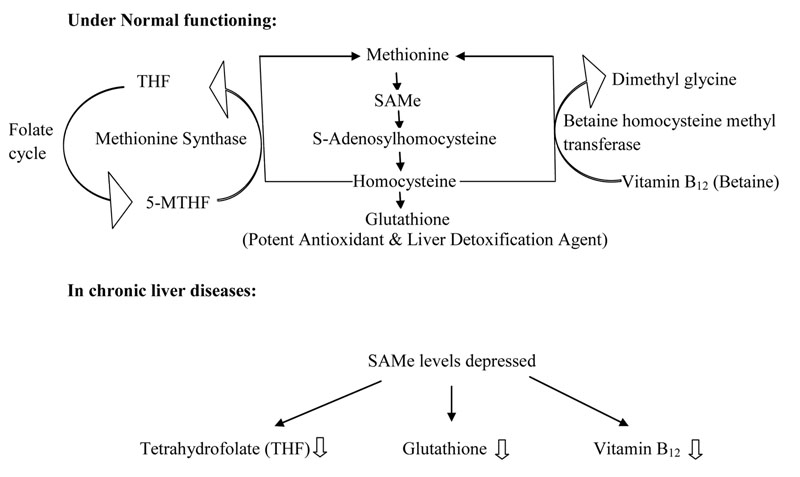
Here this combination comes into action by replenishing low levels of SAMe, 5-Methyltetrahydrofolate (Active form of tetrahydrofolate) and Methylcobalamin (Active form of Vitamin B12) and may help the body resume its normal function. Healthy levels of SAMe can help maintain healthy liver function. This combination is also useful in ageing; as people age SAMe levels can decrease. This can potentially cause important Liver protecting processes to slow down, or stop performing sufficiently.
Clinical Evidence:
â— There are more than 100 clinical studies have been conducted, it has been proven that SAMe has clear benefits in Liver health and is safe for prolong use.
â— Many Liver Physicians have been prescribing SAMe for their patients successfully for the past 10 years.
Precautions:
â—Large doses of SAMe may cause mania (abnormally elevated mood). Start at a low dose and gradually increase it. Do not exceed recommended doses.
â—Pregnant and breastfeeding women should not take SAMe.
â—People with bipolar disorder (manic depression) should not take SAMe since it may worsen manic episodes.
Drug Interactions:
If you are being treated with any of the following medications, you should not use SAMe without first talking to your health care provider.Taking SAMe at the same time as these drugs may increase the risk of serotonin syndrome (a potentially dangerous condition caused by having too much serotonin in your body):
â—Dextromethorphan
â—Meperidine
â—Pentazocine
â—Tramadol
Antidepressant medications: SAMe may interact with antidepressant medications, increasing the potential for side effects including headache, irregular or accelerated heart rate, anxiety, and restlessness, as well as the potential fatal condition called Serotonin Syndrome. Some experts theorize that taking SAMe increases the levels of serotonin in the brain, and many antidepressants do the same. The concern is that combining the two may result in a dangerous increase in serotonin levels. Talk to your doctor before using SAMe if you are taking any medications for depression or anxiety.
Levodopa (L-dopa):SAMe may reduce the effectiveness of this medication for Parkinson's disease.
Medications for diabetes:SAMe may reduce levels of blood sugar and may strengthen the effect of diabetes medications, which increases the risk of hypoglycemia (low blood sugar).
Side Effects:
â— Nausea
â— Restlessness
â— Headaches
â— A dry mouth
â— Stomach upsets
Storage:
Store in a cool dry place.

Price:
- 50
- 100
- 200
- 250
- 500
- 1000+


